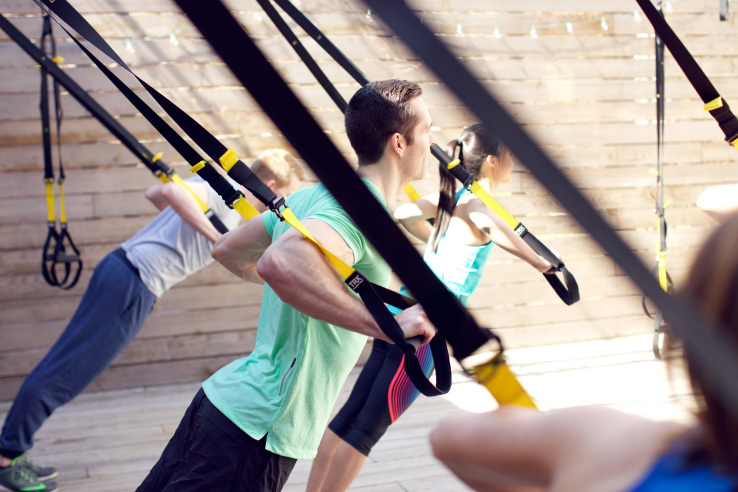ClassPass is not accustomed to sitting idle. The startup, a subscription marketplace that lets users find and book fitness classes, is today introducing credits.
ClassPass CEO Fritz Lanman hinted at the change at Disrupt SF last year, explaining that the service has a great market fit with a certain demographic, but doesn’t work as well for people who want more value for their money.
Before now, ClassPass users were able to sign up for a 3-class, 5-class or 10-class monthly membership. While pricing for those memberships changes based on geography, there was no way to differentiate between a super luxurious indoor Flywheel cycling class (more expensive) and a basic yoga class at a gym (less expensive).
A la carte, the prices for those classes would be very different, but ClassPass still counts them as a single class credit.
Users could, of course, purchase more classes a la carte, but at a standard price. Users could also purchase a membership to Blink Fitness for open gym time for an extra $15/month.
With credits, users are able to buy as much as they want on a monthly basis, with the option to top up whenever they want. Plus, these credits roll over in to the next month, as fitness is often seasonal, with people working out less during busy work months or closer to the holidays.
Moreover, a credit-based model means that ClassPass is no longer limiting the amount of times a user can go to a class in a given month. In the past, ClassPass has only let users go to a single class three times a month.
ClassPass partners now have the ability to dynamically price their classes, making peak classes more expensive than off-peak classes and driving a new, more cost-conscious consumer to lower-attendance classes.
“We’re a subscription company, and we are aggregators just like Netflix and Spotify,” said ClassPass CEO Fritz Lanman. “But we look at companies like Uber, who have dynamic pricing, and see an opportunity that combines the best of both worlds. Marketplace pricing incentivizes customers to find great value and opens their eyes to a new workout they would have never given the time of day to.”
But how do they determine this pricing?
ClassPass has created an algorithm that takes into account all the data the company has collected after years of seeing how people browse, book, and attend fitness classes. The algorithm uses a wide array of inputs, including time of day, day of the week, weather, location and much more, to determine what a fitness partner should charge for any given class.
This also allows fitness partners to include high-demand, peak, premium inventory that has historically been unavailable on the ClassPass platform.
The new pricing structure is as follows:
- $45/month: 27 credits (2-4 classes)
- $75/month: 45 credits (4-6 classes)
- $135/month: 90 credits (8-12 classes)

ClassPass has a history of making changes, sometimes drastic ones, in the name of the long-term vision. ClassPass first launched as Classtivity in 2012, letting users search for various classes and book on the spot. The platform didn’t work as a search engine, as most folks aren’t motivated to go find fitness classes on a one-off basis.
So Classtivity introduced a subscription model and rebranded to ClassPass, letting users buy 10 classes a month up front, which they could then reserve through the platform.
While that worked reasonably well, the company continued iterating, introducing tiers and even raising prices in 2016 in pursuit of healthier margins and long-term sustainability. It cost the company 10 percent of its users, but it paid off in the long-run, with ClassPass seeing 5 percent user growth month-over-month and 20 percent gross margins.
With the introduction of credits, ClassPass steps even closer to getting into new verticals beyond fitness. Dynamic pricing allows the platform to more easily slide into a new category, such as wellness, and adapt to that particular industry’s pricing structure without fundamentally changing the ClassPass business.
ClassPass has raised a total of $173 million with a valuation of $470 million, according to the company. The ClassPass platform is operational in 50 cities across the U.S., U.K., Canada and Australia, with 8,500 partner studios and 45 million reservations made to date.


